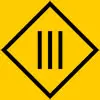A Comprehensive Overview of IP Protection Classes
The protection classes in electrical engineering are a fundamental and essential classification of electrical equipment and devices, designed to ensure the safety of users and environments. Electrical devices and machines can pose potential hazards as they utilize electrical energy, which can expose users to electric shock. To minimize this risk, protection classes have been developed, offering various levels of protection.
Each protection class is characterized by specific safety features and protective measures that can vary depending on the application and environment. For instance, certain workspaces may require a higher protection class than others to minimize the risk to human life.
Protection Class I:
Electrical equipment classified as Protection Class I has an earth/ground connection, providing additional protection against electric shock. They are identified by the symbol of a square combined with the letter "I".
Protection Class II:
Electrical equipment classified as Protection Class II offers reinforced protection against electric shock by using double insulation or reinforced insulation. They do not require an earth/ground connection. They are identified by the symbol of a square combined with the letter "II".
Protection Class III:
Electrical equipment classified as Protection Class III operates with Safety Extra Low Voltage (SELV) and provides additional protection against electric shock. They are identified by the symbol of a square combined with the letter "III".
Protection Class 0:
Protection Class 0 is no longer recommended and is not allowed in many countries. It refers to electrical equipment without additional protection against electric shock. Products in Protection Class 0 are no longer available in the market.
Marking electrical equipment with the appropriate protection class is done through symbols indicated on the product or in the technical documentation. It is crucial to choose the correct protection class according to the requirements and regulations of the specific country and application to ensure safe operation and minimize the risk of electric shock.

Electrical Equipment of Protection Class 0
Protection Class 0 has no specific labeling or symbol. This protection class is no longer recommended and is not allowed in many countries. Electrical equipment in Protection Class 0 only has basic insulation and does not provide additional protection against electric shock. They cannot be connected to the protective grounding system, and protection against electric shock must be solely ensured by the equipment's environment.
Due to the lack of protective measures, the use of equipment in Protection Class 0 is not advisable, as it can pose an increased risk of electric shock. It is strongly recommended to use equipment with a higher protection class, such as Class I, II, or III, to ensure safety and comply with applicable regulations.
Electrical Equipment of Protection Class I

Electrical equipment classified as Protection Class I is widely used in various applications, especially in household appliances, power tools, industrial machinery, and other electrical devices. The earth/ground connection plays a crucial role in this protection class, as it provides an additional layer of safety. When an electrical device of Protection Class I is properly connected, it establishes a secure connection to the installation's grounding system.
In the event of an internal fault, such as a short circuit or damaged insulation, current may flow into the device's enclosure. The earth/ground connection ensures that this fault current is safely diverted through the grounding circuit, significantly reducing the risk of electric shock for the user. Grounding ensures that the device's enclosure is not under voltage and does not pose a hazard to the user, even if they come into contact with it.
Protection Class I is particularly important for devices where accidental contact with live parts is possible, such as devices with metal enclosures. A typical example of such devices includes household appliances like washing machines, microwaves, or refrigerators. By using the earth/ground connection, the risk of electric shock in case of a fault is minimized, which is crucial for normal operation as well as for maintenance or repair purposes.
It is essential to emphasize that the correct installation and maintenance of Class I equipment should be performed by qualified professionals. Proper connection of the earth/ground is vital to ensure the safety function. Additionally, the electrical installations to which these devices are connected must be correctly grounded to provide effective protection.
Protection Class I offers a proven and reliable protection mechanism that is mandated in many countries and industries to ensure the safety of users and professionals. By adhering to Protection Class I standards, potential accidents and electrical hazards can be minimized, making a significant contribution to electrical safety. Therefore, it is crucial to familiarize oneself with the protection classes and their requirements to make informed decisions when selecting, installing, and maintaining electrical equipment.
Electrical Equipment of Protection Class II

Protection Class II is another important safety level in electrical engineering, specifically designed to increase user safety by employing an additional safety measure to prevent electrical hazards. Unlike Protection Class I, Protection Class II does not rely on an earth/ground connection; instead, it utilizes double or reinforced insulation to provide an effective protective mechanism.
Double insulation consists of two independent insulation layers that isolate electrical conductors from the touchable parts of the device. This additional barrier ensures that even in the event of an internal fault where insulation may be damaged, no live parts come into contact with the enclosure, thus eliminating the risk of electric shock. Double insulation is a proven method to enhance protection against electrical hazards and minimize the risk of accidents.
An alternative method is reinforced insulation. In this case, a single insulation layer is thicker and more robust than conventional insulation. This reinforcement creates an additional protective layer that prevents the penetration of electrical currents into the enclosure. Similar to double insulation, reinforced insulation provides reliable protection against electrical hazards.
Protection Class II is commonly used in devices and electrical appliances that have a smaller size or weight, where the use of an earth/ground connection might be impractical. Examples include portable power tools, lighting fixtures, audio and video devices, office equipment, and similar products. The use of Protection Class II provides an excellent solution to ensure a high level of safety without the need for a grounding connection.
However, it is essential to note that the selection of Protection Class II cannot be arbitrary. Specific safety standards and norms must be followed to ensure that double or reinforced insulation provides the required protective effect. Electrical equipment of Protection Class II must undergo careful testing and certification to ensure compliance with applicable safety regulations.
Overall, Protection Class I and Protection Class II offer different but equally effective methods of protection against electrical hazards. Choosing the appropriate protection class depends on the specific application, environmental conditions, and safety requirements. In both cases, proper installation, regular maintenance, and adherence to safety standards are essential to ensure safe and reliable operation. Compliance with protection classes significantly contributes to minimizing the risk of accidents and injuries related to electrical equipment, ensuring the safety of users.
Electrical Equipment of Protection Class III

Protection Class III represents the highest level of protection in electrical engineering and is applied in situations where an exceptionally high level of protection is required. The characteristic feature of Protection Class III is the use of Safety Extra Low Voltage (SELV), which limits the voltage to a very low value considered safe for the human body, posing no harmful effects to health.
Limiting the voltage to a safe level is crucial in providing an additional level of protection against electric shocks. Even if a user comes into contact with live parts of a Protection Class III device, the energy transferred is so low that it cannot cause any health damage. This is particularly significant in environments where individuals may be at an increased risk of electrical hazards, such as medical facilities, laboratories, bathrooms, or moist environments.
Protection Class III is often used in electrical devices and systems designed for use in damp or wet environments, where the risk of electrical accidents may be higher. Typical examples of Protection Class III devices include submersible pumps, whirlpools, saunas, medical electrical equipment for direct patient contact, and similar applications.
Complying with Protection Class III requires careful planning and installation to ensure that the voltage is indeed limited to the safe value. This usually involves the use of specialized protective transformers or other protective measures to ensure the Safety Extra Low Voltage. Complying with regulations and standards is crucial to ensure safety.
Although Protection Class III provides particularly high protection against electrical hazards, it is essential to note that proper installation, regular maintenance, and adherence to safety regulations are still critical. Handling electrical equipment properly is essential to minimize potential risks and ensure the safety of all users.
In summary, Protection Classes I, II, and III represent important protective mechanisms that must be carefully selected based on specific requirements and environments. By providing an appropriate level of protection, they contribute significantly to ensuring the safety of users, professionals, and the general public while reducing the risk of electrical hazards.
Electrical Equipment of Protection Class I typically features an earth/ground connection that allows for secure grounding. This ensures that in the event of a defect or short circuit, current is safely diverted, drastically reducing the risk of electric shocks.
Protection Class II, on the other hand, dispenses with the earth/ground connection and instead offers double or reinforced insulation. This additional insulation protects users from electrical hazards even in the presence of internal defects or damage.
Protection Class III utilizes Safety Extra Low Voltage (SELV), meaning that the voltage is limited to a very low and safe level. This provides additional protection against electric shocks and is particularly crucial in high-risk environments.
In addition, there is the outdated Protection Class 0, which is no longer recommended and is not allowed in many countries. This protection class refers to electrical equipment without additional protection against electric shock and is no longer manufactured.
Choosing the right protection class is crucial to ensure user safety and smooth operation of electrical devices. The labeling of the protection class on the devices is done through specific symbols indicated on the product or in the technical documentation. It is essential to select the appropriate protection class according to the requirements and regulations of the specific country and application to ensure safe operation and minimize the risk of electric shock. This way, both professionals and end-users can safely use electrical devices without unnecessary hazards.
The protection classes serve to prevent direct and indirect contact with live parts and thereby reduce the risk of electric shock.
In direct contact, the human body comes into direct contact with active, live parts. To prevent direct contact, these live parts are provided with insulations or covers to ensure a safe separation from the human body.
In indirect contact, voltage occurs at parts that are not normally live. This can be caused by insulation failure or body contact, where live parts come into contact with non-live parts, such as the enclosure of an electrical machine. To reduce the risk of indirect contact, additional protective measures are taken, such as the use of protective grounding, double or reinforced insulation, or Safety Extra Low Voltage in the respective protection classes.
It is important that electrical equipment is designed, installed, and maintained according to their protection class to prevent both direct and indirect contact and thereby ensure user safety. Compliance with applicable regulations and standards is crucial in this regard.
Elektrosicherheit: Richtlinien und Vorsichtsmaßnahmen für einfache elektrotechnische Arbeiten
Die Sicherheit hat oberste Priorität.

- Alle hier bereitgestellten Anleitungen und Informationen dienen rein informativen Zwecken und sollen ausschließlich zur Informationsbeschaffung und Weiterbildung verwendet werden. Sie sollten nicht als Ersatz für professionelle Beratung angesehen werden. Bei Zweifeln empfiehlt es sich, einen qualifizierten Elektriker hinzuzuziehen, um fachkundige Unterstützung zu erhalten.
- Es ist wichtig, die örtlichen Vorschriften und Bestimmungen bei elektrischen Arbeiten zu beachten. Arbeiten mit Strom sollten nur von qualifizierten Fachleuten durchgeführt werden, da sie lebensgefährlich sein können.
- Fehler in Anleitungen und Schaltbildern sind möglich. Der Anbieter übernimmt keine Gewähr oder Haftung für Schäden oder Verletzungen, die aus der Umsetzung der bereitgestellten Informationen resultieren könnten. Es liegt in Ihrer Verantwortung, die Richtigkeit der Informationen zu überprüfen und die erforderlichen Sicherheitsvorkehrungen zu treffen.
- Die Verwendung geeigneter persönlicher Schutzausrüstung (PSA) ist entscheidend, um die Sicherheit bei elektrotechnischen Arbeiten zu gewährleisten. PSA schützt vor Stromschlägen, Augenverletzungen, thermischen und mechanischen Gefahren. Es ist jedoch wichtig zu beachten, dass PSA allein nicht ausreicht und durch Fachwissen, Fähigkeiten und die Einhaltung von Sicherheitsvorschriften ergänzt werden muss.
- Arbeiten an Teilen, die unter Spannung stehen, sind strengstens untersagt. Vor Beginn der Arbeiten müssen geeignete Sicherheitsvorkehrungen getroffen werden, einschließlich des Freischaltens der Anlage.
- Bei Schäden durch mangelhafte Elektroinstallation haftet der Errichter der Anlage gemäß den geltenden gesetzlichen Bestimmungen.
- Diese Zusammenfassung von Richtlinien und Vorsichtsmaßnahmen ist nicht umfassend. Bei Unsicherheiten ist es ratsam, einen qualifizierten Elektriker zu konsultieren oder sich an örtliche Vorschriften und Bestimmungen zu halten, um maximale Sicherheit zu gewährleisten.
- Die ordnungsgemäße Installation und Wartung von elektrischen Anlagen und Geräten ist von großer Bedeutung, um mögliche Gefahren zu minimieren und ein sicheres Umfeld zu schaffen.